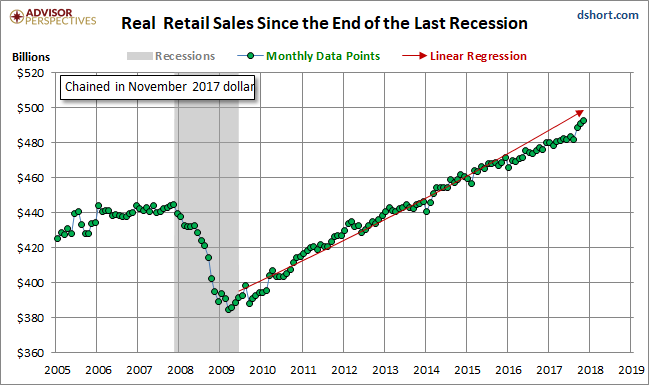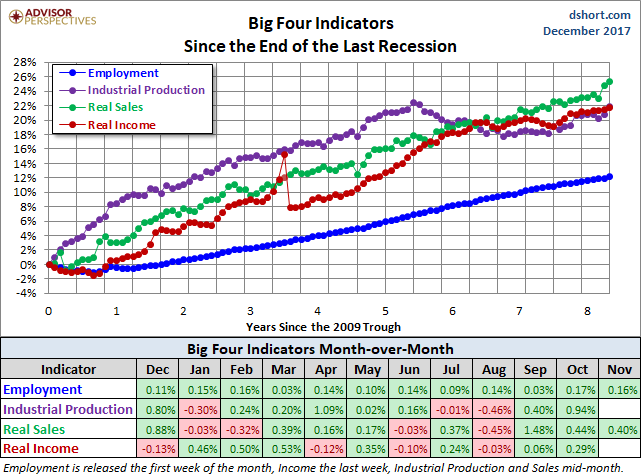Official recession calls are the responsibility of the NBER Business Cycle Dating Committee, which is understandably vague about the specific indicators on which they base their decisions. This committee statement is about as close as they get to identifying their method.
There is, however, a general belief that there are four big indicators that the committee weighs heavily in their cycle identification process. They are:
The Latest Indicator Data
Month-over-month nominal sales in October increased by 0.8% (0.79% to two decimals). Real Retail Sales, calculated with the seasonally adjusted Consumer Price Index, increased by 0.23. The chart gives us a close look at the monthly data points in this series since the end of the last recession in mid-2009. The linear regression helps us identify variance from the trend.

We see that this indicator has been rising below trend since the end of 2015.
The Generic Big Four
The chart and table below illustrate the performance of the generic Big Four with an overlay of a simple average of the four since the end of the Great Recession. The data points show the cumulative percent change from a zero starting point for June 2009.

Assessment and Outlook
The US economy has been slow in recovering from the Great Recession, and the overall picture has been a mixed bag for well over a year and counting. Employment and Income have been relatively strong. Real Retail Sales have been rising but below trend. Industrial Production has taken much longer to rebound since 2009.
Here is a percent-off-high chart based on an average of the Big Four. The last time the average of the four set an all-time high was in November 2014 but is currently inching closer to another high.
The next update of the Big Four will be the latest read on Industrial Production, out tomorrow morning.











Leave A Comment